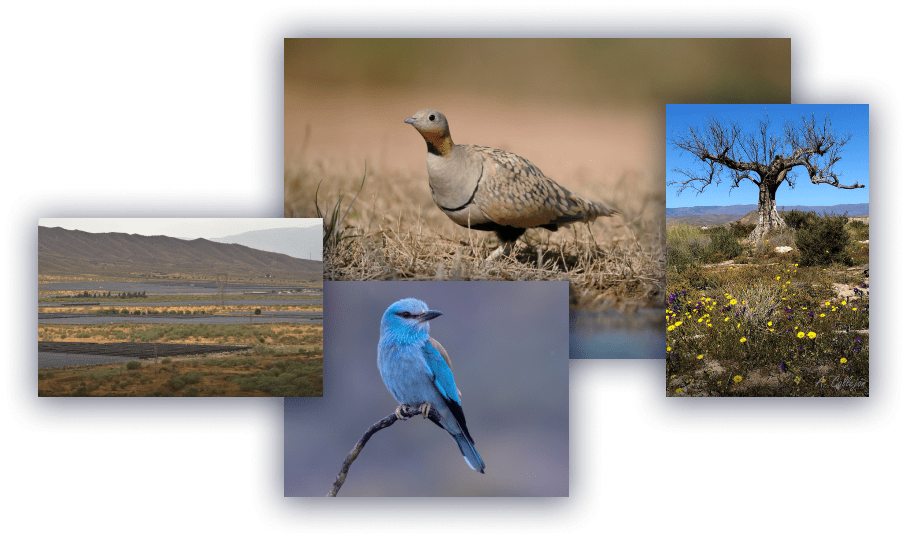AMBIOSOLAR
Analysis of the deployment of solar energy in the South East of the Iberian Peninsula. Proposals to meet EU environmental objectives through land-use planning.
Ref. TED2021-130035B-100
WHY WAS AMBIOSOLAR BORN?


Regulation (EU) 2020/852 | Taxonomy Regulation
WHAT IS AMBIOSOLAR FOR?
To increase scientific knowledge of our natural resources.
Specifically:
- Reliable and updated distribution of two threatened bird species.
- Their habitat requirements.
- The impact that the installation of photovoltaic plants and their power lines have on various aspects of their biology.
With this information, we will be able to advise companies and administrations, design land-use plans and effective compensatory measures and, in a word, to ensure that photovoltaic development in Campo de Tabernas is compatible with the conservation of biodiversity.
Ambiosolar will also produce scientific knowledge on the socio-economic impact of photovoltaic development in Campo de Tabernas. A land-use plan will be proposed accordingly to ensure that such a development is compatible with the way of life and quality of life of its inhabitants.
Ambiosolar incorporates a gender dimension. Its results can help reduce the lack of balance affecting women in the rural world by providing information and added value to an economic activity in which they are particularly active: rural tourism.
GROUP AND ENTITIES
- Francisco Valera
- Luis Bolonio
- Alberto Matarán
- Eulalia Moreno
- Luis Villodres
COLLABORATE WITH OUR PROJECT





